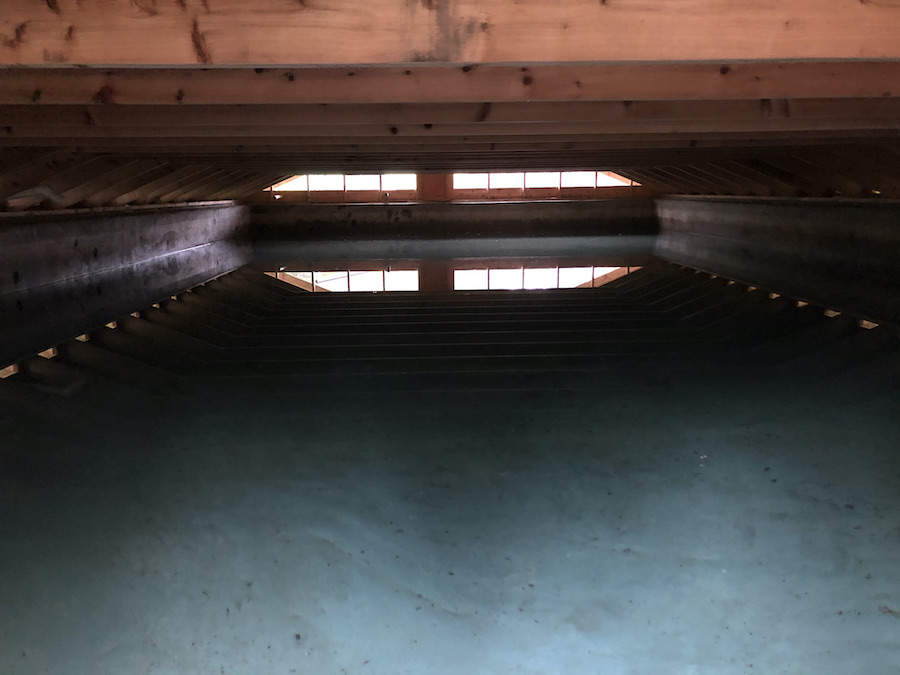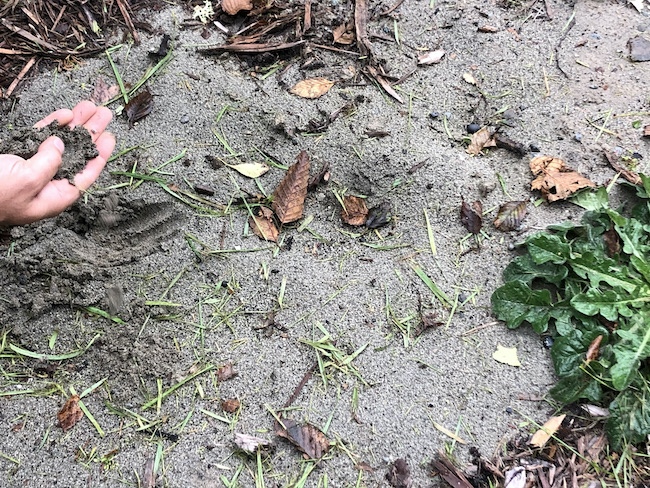written by: Mary Bruno
This is the fourth in a monthly series of guest blog posts that Mary will be sharing about island water quality topics thru the Groundwater Protection Committee.
Welcome to Part 2 of my conversation with Jim Garrison, retiring co-owner of Burton Water Company. Jim is a Vashon native, a 45-year veteran of the Island’s water business, and one of the fiercest guardians of its water supply. You can find Part 1 of our conversation here.
[Note: My questions appear in bold.]
Has the water business changed much in your years with Burton Water?
“Over time the water industry has become more and more regulated, and the regulation by the various health agencies, the Utilities and Transportation Commission and the Department of Ecology has gotten very strict. But it’s surprisingly difficult to get anybody to do anything if you have a problem, as witnessed by the recent situation with the RAP material. I want to stress that regulations protecting water resources, while adequate, are not being very well enforced.” [RAP, or Recycled Asphalt Pavement, is sometimes spread on dirt roads, driveways and parking lots.]
What are the biggest threats to Burton Water Company’s water supply and water quality?
“Most of Vashon’s water is extracted from extremely shallow sources. This is something I’ve really tried to hammer home. Burton Water Company’s water starts 18 feet underground. 18 feet. In the summer, Water District 19 takes 30-40 percent of its water from surface water. Even most homeowner wells are less than 200 feet deep. So this idea that we’re all drinking groundwater that’s 600 feet underground is just erroneous. Most of the groundwater we drink is barely out of the category of surface water. In the case of Water District 19 it is surface water. So, all threats are immediate. They’re not, oh yeah, this is gonna take 50 years to get to the groundwater. No. It’s gonna take two! That was my argument about the RAP.”
Let’s get to RAP. In 2018, King County repaved portions of Vashon Highway and required Icon Materials, the paving contractor, to take the asphalt waste to an approved disposal site off-Island. Icon subcontracted the job to Vashon’s D&R Excavating. Instead of removing the asphalt millings, D&R sold and distributed some to several Island businesses and homeowners, and stockpiled the rest on its Cemetery Road property. After a public outcry from Burton Water, the County compelled Icon to remove some of the millings, including from Burton Water’s neighbor, Misty Isle Farms. But the cleanup process stalled. The County and the contractors are currently in litigation, the millings pile hasn’t budged, and you’re not happy about any of it.
“The King County building code disallows any spreading or stockpiling of RAP materials on Vashon. Period. Two years later, it’s still sitting there [on Cemetery Road] in a pile the size of Chautauqua. It’s perched right over the surface water for Water District 19. Sure RAP breaks down slowly. It’s not like a tanker truck of oil spilled on the highway. But over time it’s going there [into the aquifer]—and not that long a period of time.”
But isn’t there some disagreement about whether RAP poses a threat to groundwater?
“You cannot read the literature and come to that conclusion. You can come to the conclusion that you don’t know for sure whether it [poses a threat]. But you cannot make a definitive statement that that material is inert and safe to be dumped on shallow aquifers. We have to get this stuff out of here now.”
Burton Water had an existential brush with surface contamination several years ago when your neighbor, Misty Isle Farms, began raising cattle.
“It happened pretty quickly, which is another reason why I kind of go ballistic when I listen to people talk about environmental threats in terms of decades. The nitrate level in Burton water was 0.2 milligrams per Liter (mgL). That’s pretty standard for nitrates in a forested setting, which is pretty much how you would describe Vashon’s water systems. So there was a 30-acre field to the north of us that was mostly Doug fir and Hemlock. Misty Isle bought that piece and cleared it and planted a pasture. Then they started running cattle on their land, and fertilizing and watering that pasture pretty heavily. And our nitrate levels went from 0.2mg/L to 5.0mg/L. That’s a 25-fold increase in a matter of maybe five years. [Nitrates are common in soil but present a risk to infants and pregnant women. According to the Washington State Department of Health, “Infants who drink water with high levels of nitrate (or eat foods made with nitrate-contaminated water) may develop a serious health condition due to the lack of oxygen. This condition is called methemoglobinemia or “blue baby syndrome.”]
“The highest reading we got was 7.0mg/L. If you get to 10, it’s a mess. You have to notify your customers and supply them with alternative drinking water sources. That’s the only water source we have. We panicked and filed a complaint with the Department of Ecology. Misty Isle hired a whole bunch of lawyers. The DOE bought their argument that it wasn’t the fertilizer [causing the nitrate spike], and it wasn’t the cows. It was the alder trees. The natural deteriorating nitrogen from the roots of the alder trees that were on that field.
“DOE and the County Conservation District did make Misty Isle reduce fertilizer amounts and change to a very, very slow release fertilizer. Almost immediately we saw a leveling off of the nitrogen levels. Of course, as soon as they stopped fertilizing and running their cattle there, our nitrate levels have gone way, way, way back down.” Burton Water readings are now at 2.5mg/L.
Feature photo: A Burton Water Company holding tank that helps supply some 400 households.
In Part 1 of our conversation Jim Garrison talks about almost selling Burton Water to an out-of-state utility company, the true cost of water, and whether we have enough.



FANTASTIC REPORTING!
THE LEVEL OF DETAIL SHOWS CLEARLY HOW INTER-RELATED OUR ISLAND SYSTEMS ARE ECOLOGICALLY, ECONOMICALLY AND CULTURALLY. THIS IS A REAL CONTRIBUTION TO ISLAND-WIDE DISCUSSIONS.
AND THANKS TO JIM FOR STEPPING UP FOR OUR ISLAND’S HEALTH, AS WELL AS TAKING A TALL AND VERY PERSONAL STAND TO PROTECT OUR ISLAND’S LOW HUMAN DENSITY.
Thanks Jim and Mary. Great piece.
Thanks for Providing this great interview (sorry about all caps!).
Not sure why I’m in all caps (I promise I’m not yelling), but wanted to say thanks to Mary and Jim for a great series of interviews and for covering this important topic.